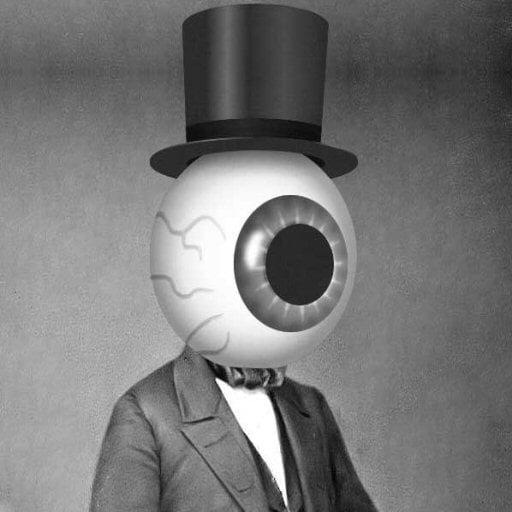Travel Agents. I remember growing up they were all over the place and people had to go to them to book flights and hotels or buy package holidays.
They’re all but gone now. I’m vaguely aware there may still be some specialist ones left catering to elderly boomers?
Its an entire business and career path thats completely gone, replaced by websites and at a push generic call centres (some people still book over the phone I guess?)
A lot of print media is dead. Magazines have shriveled up. Newspapers are dying.
I don’t think the Internet provided an equivalent replacement.
Yeah, a lot of traditional media really did get clobbered by the Internet.
considers
I think that some of what did that in was access to user-driven forums and other social media. Reddit. And, well…us here on the Threadiverse.
Used to be that if you lived in a small town somewhere, you probably didn’t have much ability to connect up with people and businesses and stuff that shared your interests. Not a large pool to draw from. But you could have a magazine for a given hobby. You’d have some people expert in the field to curate material. User input could be provided in the form of letters. Companies serving the field could promote their products.
In large cities, maybe you could have a club for shared interests, meet sporadically. But outside of that, not a lot of options.
But once you introduce online forums, suddenly people with particular interests can be connected from all over the world. And while, yeah, you don’t necessarily have paid people full-time contributing content on the forum (though websites elsewhere can be linked to), there’s enough overlap that you just don’t need that.
Some of it is that companies (or hobbyists) can just put up their own websites, and they can be searched for and linked to from places like those forums. I don’t need a magazine to make me aware of company X having some new offering any more.
It doesn’t completely fill the same role, but I think that there’s enough overlap that it more-or-less replaces most things that magazines did.
And to some extent, magazines still exist, just in the form of websites with digital editions. Like, National Geographic is a thing — actually, they still do a print edition too — but they have a subscription website.
The thing a lot of people fail to understand about many technologies is that they don’t always eliminate ALL of something.
The internet didn’t eliminate all of almost any job, but it significantly reduced the number of people working in many jobs.
Significant impacts reductions have been felt in:
- Mail delivery
- Retail workers
- Newspapers
- Landline Telephone Services
- Photograph printing
- Encyclopedias
- Movie theaters
- Video Game Arcades
and more
The internet didn’t eliminate all of almost any job, but it significantly reduced the number of people working in many jobs.
Movie theaters
I don’t know. Looking online, it looks like the peak ticket sale year was something like 2002. The rise of streaming video really came later. Wikipedia says that Netflix started doing streaming video in 2007, and they weren’t that big for some time.
I think that a larger factor was the increasing deployment of non-Internet technologies:
-
The television in the home.
-
The videocassette recorder, to let one play videos at home rather than watching broadcast material.
-
Cable and other forms of pay television.
-
Higher-fidelity video storage media, like DVDs and later Blu-Ray. I think that that’s maybe what finally tipped the balance into decline, but theaters had been having to fight headwinds from earlier stuff long before that.
The drive-in theater, which I think more-directly competed with home video, peaked well before that. You had your own semi-private viewing box, more-akin to being able to view something in your own home:
Decline (1970s–1990s)
Several factors contributed to the decline of the drive-in movie industry. Beginning in the late 1960s, drive-in attendance began to decline as the result of improvements and changes to home entertainment, from color television and cable TV to VCRs and video rental in the early 1980s. Additionally, the 1970s energy crisis led to the widespread adoption of daylight saving time (which caused drive-in movies to start an hour later) and lower use of automobiles, making it increasingly difficult for drive-ins to remain profitable.
Mainly following the advent of cable television and video cassette recorder (VCR), then with the arrival of DVD and streaming systems, families were able to enjoy movies in the comfort of their homes. The new entertainment technology increased the options and the movie watching experience.[22]
That’d be long before the Internet was playing a role in video.
Video Game Arcades
I’m pretty sure that those peaked in the 1970s or 1980s, and I think that home video game consoles were the major factor there, not the Internet.
kagis
Sounds like about 1982, for North America.
https://en.wikipedia.org/wiki/Golden_age_of_arcade_video_games
The golden age was a time of great technical and design creativity in arcade games. The era saw the rapid spread of video arcades across North America, Europe, and Asia. The number of video game arcades in North America was doubled between 1980 and 1982;[6] reaching a peak of 10,000 video game arcades across the region (compared to 4,000 as of 1998).[7] Beginning with Space Invaders, video arcade games also started to appear in supermarkets, restaurants, liquor stores, gas stations, and many other retail establishments looking for extra income.[8] Video game arcades at the time became as common as convenience stores, while arcade games like Pac-Man and Space Invaders appeared in most locations across the United States, including even funeral homes.[9] The sales of arcade video game machines increased during this period from $50 million in 1978 to $900 million in 1981,[6] with 500,000 arcade machines sold in the United States at prices ranging as high as $3,000 in 1982 alone.[10] By 1982, there were 24,000 full arcades, 400,000 arcade street locations and 1.5 million arcade machines active in North America.[11] The market was very competitive; the average life span of an arcade game was four to six months. Some games like Robby Roto failed because they were too complex to learn quickly. Qix was briefly very popular but, Taito’s Keith Egging later said, “too mystifying for gamers…impossible to master and when the novelty wore off, the game faded”.[12] Around this time, the home video game industry (second-generation video game consoles and early home computer games) emerged as “an outgrowth of the widespread success of video arcades”.[13]
The golden age of arcade games began to wane in 1983 due to a plethora of clones of popular titles that saturated arcades, the rise of home video game consoles, both coupled with a moral panic on the influence of arcades and video games on children. This fall occurred during the same time as the video game crash of 1983 but for different reasons, though both marred revenues within the North American video game industry for several years.
Home video game consoles were winning on price, but there were still some years where arcades used more-expensive hardware, so could run more graphically-impressive games. I remember the (pricy) Neo Geo in particular driving flashier arcade hardware than was generally available to home console users. WP says that that was released in 1990, so there was still over a decade remaining where arcades could still sell themselves on high-end video games. Plus, arcade controls were better-suited to some video games, like having six buttons and a fightstick for fighting games.
But, anyway, my real point is that all that really came prior to widespread Internet availability changing the scene. Technology did alter that environment and obsolete things, but the Internet wasn’t really the big factor there.
-
All new technologies eventually displace obsolete jobs. But crucially, they usually do it slowly enough that the workers whose jobs are being obsoleted aren’t all sacked virtually overnight (i.e. society has the time to evolve relatively peacefully) and more of the new and better paying jobs are created for newer generations.
The internet is no different. My Grandpa was a telegraph operator. My Father worked for AT&T installing landlines and I’m a computer guy. Both their jobs are virtually gone and mine will be soon. But I did manage to make a career out of it.
The first real, violent disruption is happening now however: AI is on the verge of obsoleting a MAJORITY of all jobs within a few years, and no new jobs are really created to replace them. Society will be deeply uprooted and won’t have time to prepare for the shift. A lot of people will lose their jobs with no alternatives to put food on the table. That’s a recipe for war.
The main threat of AI is that it’s software. At least when robots displaced factory jobs, they introduced robot design, manufacturing, and maintenance jobs. But software is infinitely scalable. You don’t have to program every new instance of a software, it’s just copy paste. Sure there’s tailoring, debugging, and developing new models, but the number of jobs displaced is orders of magnitude higher than jobs created, and rollout is relatively quick and easy. Once a software is mature enough, it can displace an entire industry basically overnight.
AI & AGI have me kinda terrified because of how we worship the rights of ownership especially in America.
Some major company will own the AI/AGI and will have the right to all of the profits it generates. Combining AGI with the advancements of robotics, pretty much any job that could justify the expenditure of the robot and AGI will be eliminated. With how we treat the rights of ownership and with how the ownership class sees the rest of humanity, the only future I see is a future where “we have too many people” is the only conversation and not because we can’t feed them or house them, but because there isn’t enough work for them to “earn their own living.” The ownership class will never accept “giving” anything away to help people that “aren’t productive.” You’re not a human, you’re a profit generating labor machine.
So: Work or Die!™ Now with 95% less jobs!
Fun future. :(
AI & AGI have me kinda terrified
If you’re young, you should be.
I’m not and I’m nearing the end of my professional career. Even if I get the sack tomorrow, I’ve had a very good run. And I have other skills that simply can’t be replaced by AI or robots, so I’m not really worried. Concerned, yes. But not worried.
But I know I won’t have any retirement, that’s for damn sure. Still, it beats not having any professional prospects from the get-go.
Carrier pigeon.
There was a river rafting company not too far from where I live that switched to carrier pigeons to deliver SD cards to home base.
They had photographers stationed at a few points down river taking pictures of the clients, after each group had passed they put the SD card on one pigeon and it flew straight to base. By the time the clients were back to base the pictures were already printed and no one had to hurry back or rely on having good enough signal.
I hope they used rfc1149.
Comments like this make asking these questions so worth it. That’s such a cool thing to know is happening somewhere!
The original UDP
TCP and UDP are still possible over layer 2 avian carrier
Theres even QoS in RFC2549
Prior to the widespread adoption of the Web, it used to be necessary to talk to a lot of people on telephones to accomplish the same sorts of tasks that we do on websites today. Ordering products. Requesting forms. Starting/changing/terminating services. If you want to do business with someone, either you have to have a brick-and-mortar office near them, or be able to take calls. And people had to field those calls.
That doesn’t mean that call centers don’t exist any more, but they’re a lot less important as a way to interact with a company.
Prior to telephones, it tended to require sending letters, and I’m sure that there were a ton of people who had to open, process, and write correspondence that telephones replaced (though in that case, I suspect that there was some overlap, though the skillset isn’t exactly the same; a good typewriter operator isn’t necessarily great on the telephone and visa versa).
Blockbuster employee.
Postal workers have takes a significant cut with the popularisation of email.
The saving grace for postal services is the rise of online stores like Amazon. They all shifted from delivering mail to delivering parcels.
They actually deliver a third of all UPS and FedEx ground packages in the US.







